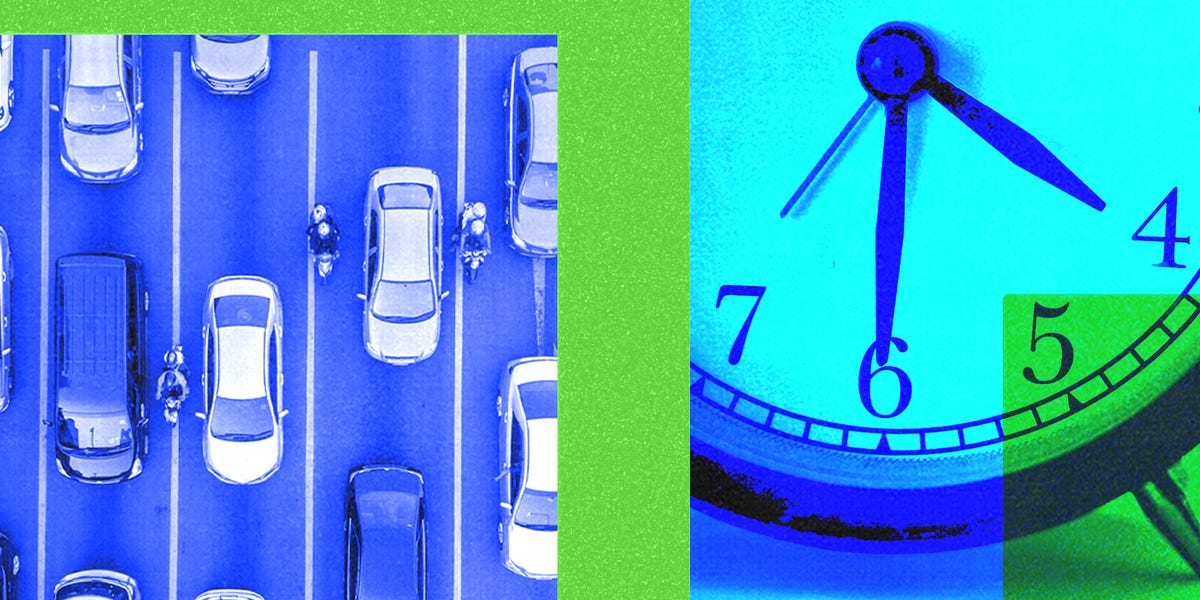
After roads went eerily quiet during the early months of the pandemic, traffic is back with a vengeance. Traffic congestion is as bad as it was pre-pandemic in about half of the world’s top urban areas, but traffic patterns have shifted, according to a new report by INRIX, a transportation data and analytics company.Congestion no longer reflects the traditional nine-to-five work schedule. These days, as many Americans start a car trip at noon as do at five pm. Average hourly traffic during the middle of the day is up 23% since 2019, INRIX found.New remote and hybrid work schedules and a rise in car ownership in recent years have transformed traffic and congestion patterns.The INRIX report found that the traditional morning peak rush hour has given way to a steadier pace of trips starting later in the morning. The number of weekday car trips starting in the 6 AM hour fell from around 80 million a day in 2019 to about 50 million in 2023, while about 60 million trips began in the 9 AM hour in 2023, up from a little over 40 million in 2019. Over 75 million trips now start between noon and 1 PM.On the reverse side of the day, midafternoon trips are up and evening trips are down. Putting that all together, it looks like many Americans have shifted from a traditional 9-to-5 commute to a noon-to-4 or even more truncated workday.Bob Pishue, a transportation analyst at INRIX, said that midday travel started to rise when COVID hit, and that pattern hasn’t dissipated. Despite many employers pressuring their employees to spend more time in the office, remote work has endured. With more flexible work schedules, people are making more midday trips to the grocery store and the gym, or getting to work late or leaving early.
“They’re either going into work late so that they can continue to drop kids off at school,” he said. And “people are still doing midday or two o’clock trips” or leaving early for vacation.Congestion in cities varies based on where jobs are located. “The importance of downtown as a destination for commuting is much different in Dallas than it is in New York,” Pishue said, noting that downtown Manhattan is home to far more of its region’s jobs than downtown Dallas.INRIX calculates congestion by gathering data from millions of anonymized sensors and vehicles and commercial vehicle data. The report calculated commute times using the time taken to drive “to and from major employment centers within an urban area from surrounding commuting neighborhoods.”This travel shift has many implications for policymakers and transportation planners. Mass transit schedules, road tolls, and even traffic lights have long been designed around the 9-to-5 workday and the rush hours that it creates. But traffic data shows cities might need to adjust their schedules and redesign their physical infrastructure to fit the new post-pandemic, remote work paradigm.”This is something that now needs attention,” Pishue said.
New York City had the worst congestion of any city in the world in 2023, the INRIX report found.
Declan Gill
Congestion is here to staySince the pandemic hit, mass transit ridership has plummeted while driving has become more popular.New York City had the worst congestion of any city in the world in 2023, the INRIX report found. Last year, New Yorkers lost an average of 101 hours to congestion delays. The city saw a 13% year-over-year increase in vehicle trips into its downtown — the sharpest increase in the country.Car ownership has also risen in recent years, including in New York.Car ownership in the five boroughs has soared over the last decade. While the population of New York City residents rose 1.4% between 2012 and 2021, the number of registered passenger vehicles rose by 12%. Still, about 54% of city households reported not owning a car in 2021.A year into the pandemic, Americans drove more despite many closed offices. People drove 2% more, measured by mileage, across US cities in March 2021 than in February 2020 and 20% more than in March 2020, when pandemic lockdowns first took effect.The shift from denser urban living to suburban and even rural living is part of this uptick in driving. Many city dwellers moved into far-flung, car-dependent exurbs and rural towns during the pandemic — and that trend appears to be continuing. For many, this means more time in their cars.Have you changed your commute in the last couple years? Tell your story to this reporter at erelman@businessinsider.com






